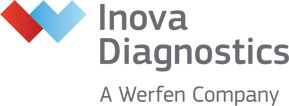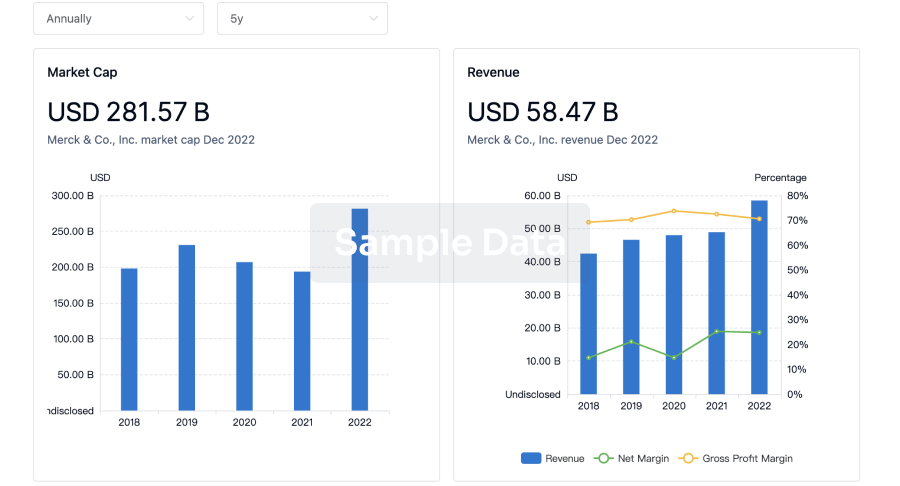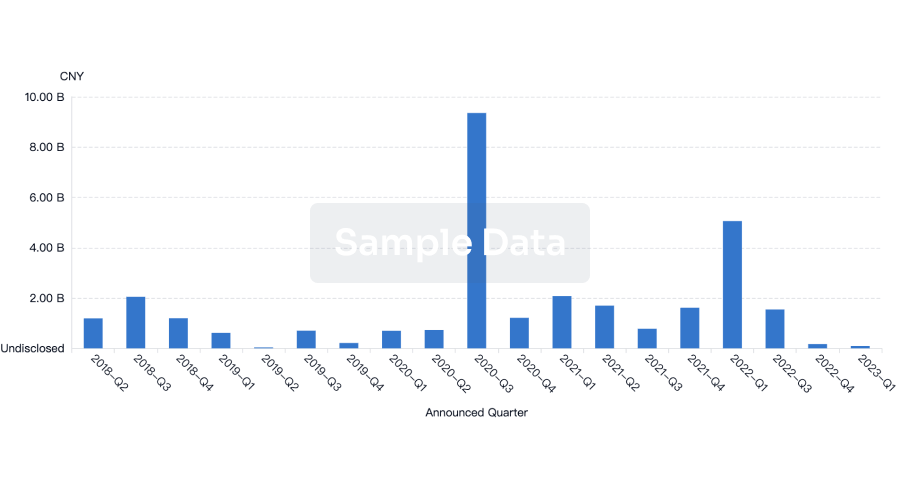Request Demo
Last update 08 May 2025

INOVA Diagnostics, Inc.
Last update 08 May 2025
Overview
Related
1
Clinical Trials associated with INOVA Diagnostics, Inc.NCT03843658
Identifying Novel Biomarkers in Early Rheumatology Patients
Patients new to a rheumatology practice will be asked if they want to consent to their blood sample, medical records, and hand/foot x-rays (with sharp scores) for the analysis and correlation with the diagnosis they will receive from the rheumatologist.
Start Date15 Mar 2019 |
Sponsor / Collaborator |
100 Clinical Results associated with INOVA Diagnostics, Inc.
Login to view more data
0 Patents (Medical) associated with INOVA Diagnostics, Inc.
Login to view more data
148
Literatures (Medical) associated with INOVA Diagnostics, Inc.24 Dec 2021·Rheumatology
Anti-RNPC-3 antibody predicts poor prognosis in patients with interstitial lung disease associated to systemic sclerosis
Article
Author: Beretta, Lorenzo ; Sanz-Martínez, Maria Teresa ; Fonollosa-Pla, Vicente ; Guillén-Del-Castillo, Alfredo ; Callejas-Moraga, Eduardo Luis ; Lorite-Gomez, Karen ; Bellocchi, Chiara ; Mahler, Michael ; Perurena-Prieto, Janire ; Severino, Adriana ; Simeón-Aznar, Carmen P
31 Aug 2021·Clinical and Experimental RheumatologyQ3 · MEDICINE
Serum calprotectin (S100A8/9), clinical and ultrasound assessment in patients with juvenile idiopathic arthritis
Q3 · MEDICINE
Article
Author: Meroni, Pier Luigi ; Giani, Teresa ; Cimaz, Rolando ; Borghi, Maria Orietta ; Piskin, David ; Bodio, Caterina ; Romano, Micol ; Gerloni, Valeria ; Gattinara, Maurizio ; Mahler, Michael ; De Lucia, Orazio
01 Jun 2021·Annals of the Rheumatic Diseases
POS0464 IS IT POSSIBLE TO IDENTIFY INDIVIDUALS AT IMMINENT-RISK OF SUB-CLINICAL JOINT INVOLVEMENT?
Author: L. Duquenne ; P. Emery ; L. Garcia-Montoya ; R. Wakefield ; A. Di Matteo ; K. Mankia ; J. Nam ; E. Cipolletta ; M. Mahler
9
News (Medical) associated with INOVA Diagnostics, Inc.13 Jan 2025
New Aptiva APS IgG and APS IgM Reagents Aid in Early Diagnosis of Antiphospholipid Syndrome in Hard-to-Diagnose Autoimmune Disease
SAN DIEGO, Jan. 13, 2025 /PRNewswire/ -- Werfen today announced that the US Food and Drug Administration (FDA) has granted 510(k) clearance for the Aptiva® Antiphospholipid Syndrome (APS) Immunoglobulin G (IgG) and Immunoglobulin M (IgM) Reagents.
Continue Reading
Aptiva utilizes particle-based multi-analyte technology (PMAT) (PRNewsfoto/Werfen)
The Aptiva APS IgG and APS IgM Reagents are immunoassays that utilize Aptiva's particle-based multi-analyte technology (PMAT) for the semi-quantitative determination of anti-cardiolipin (aCL) and anti-beta 2 glycoprotein 1 (aβ2GP1) IgG and IgM in human serum. These assays aid in diagnosing both primary and secondary APS, when used in conjunction with other laboratory and clinical findings.
"Antiphospholipid syndrome presents significant diagnostic challenges due to its complex symptomatology, often resembling other conditions," said Michael Mahler, PhD, Senior Vice President of Research and Development at Werfen.
"The FDA clearance of the Aptiva APS IgG and APS IgM Reagents marks a crucial step forward in our mission to enhance diagnostic accuracy for autoimmune diseases. These Reagents provide comprehensive data that empower healthcare professionals to make informed decisions, ultimately improving patient outcomes and reducing the burden of misdiagnosis."
The Aptiva system, a next-generation fully automated multi-analyte system, represents a significant advancement for autoimmune laboratories. By utilizing PMAT, Aptiva can deliver up to 960 results in an 8-hour shift for APS testing, allowing laboratories to handle high volumes efficiently with minimal hands-on intervention.
These new APS Reagents expand Werfen's robust Aptiva portfolio, which includes the Celiac Disease and Connective Tissue Diseases (CTD) Essential Reagents. This latest clearance expands the Aptiva portfolio to 18 FDA-cleared analytes.
Looking ahead, Werfen is in development to expand the Aptiva portfolio further to address additional autoimmune disease states, with over 60 analytes currently in various development stages. These efforts aim to improve the accuracy of autoimmune disease diagnoses and support more effective patient management strategies.
About Werfen
Werfen (werfen.com) founded in 1966, is a worldwide developer, manufacturer and distributor of specialized diagnostic instruments, related reagents, automation workcells, and data management solutions for use primarily in hospitals and independent clinical laboratories. The Company's clinical areas of focus include Autoimmunity, Hemostasis, Acute Care Diagnostics, Transfusion, and Transplant.
Werfen's solutions help improve the way patients with autoimmune diseases are diagnosed, monitored, and treated. The autoimmunity portfolio includes Aptiva®, BIO-FLASH®, NOVA View®, and QUANTA-Lyser® 3000 systems, and QUANTA Link® data management solution.
The Werfen logo is a trademark of Werfen. Aptiva, QUANTA-Lyser, QUANTA Lite, QUANTA Link, QUANTA Flash, NOVA View, NOVA Lite are registered trademarks of Inova Diagnostics, Inc., a Werfen company. BIO-FLASH is a registered trademark of Biokit S.A. All other product names, company names, marks, logos, and symbols are trademarks of their respective owners.
SOURCE Werfen
WANT YOUR COMPANY'S NEWS FEATURED ON PRNEWSWIRE.COM?
440k+
Newsrooms &
Influencers
9k+
Digital Media
Outlets
270k+
Journalists
Opted In
GET STARTED
ImmunotherapyIND
19 Feb 2024
New Aptiva APS IgG and APS IgM Reagents Enable Early Diagnosis of Antiphospholipid Syndrome in Hard-to-Diagnose Autoimmune Disease
SAN DIEGO, Feb. 19, 2024 /PRNewswire/ -- Werfen today announced it has received CE (Conformité Européenne) mark for its Aptiva® Antiphospholipid Syndrome (APS) Immunoglobulin G (IgG) and Immunoglobulin M (IgM) reagents under the European Union's (EU) In Vitro Diagnostic Medical Devices Regulation (IVDR).
Continue Reading
Aptiva utilizes particle-based multi-analyte technology (PMAT)
The Aptiva APS IgG and APS IgM reagents are immunoassays that utilize Aptiva particle-based multi-analyte technology (PMAT) for the semi-quantitative determination of anti-cardiolipin (aCL) and anti-beta 2 glycoprotein 1 (aβ2GP1) IgG and IgM autoantibodies in human serum and citrated plasma. They are used as an aid in the diagnosis of primary and secondary APS, when used in conjunction with other laboratory findings.
"Antiphospholipid syndrome is an autoimmune disease that manifests clinically as venous or arterial thrombosis and/or fetal loss and can be challenging to diagnose as its symptoms can mimic those of other conditions," said Michael Mahler, PhD, Vice President of Research and Development at Werfen.
"Early diagnosis is crucial in preventing complications as well as unnecessary procedures and increased healthcare costs. Aptiva APS IgG and APS IgM deliver expanded information to clinicians to help with the diagnosis and management of patients with autoimmune diseases."
The new Aptiva APS reagents complement Werfen's previously registered Aptiva Celiac Disease and Connective Tissue Diseases (CTD) Essential reagents and expand the number of CE Marked analytes detected by Aptiva to 19.
In addition to the APS, CTD and Celiac Disease assays, Aptiva will target additional autoimmune disease states, and has over 60 analytes in various stages of advanced development. These analytes have the potential to improve the accuracy of autoimmune disease diagnosis and support better patient management.
The Aptiva system is a fully automated multi-analyte system that represents the next generation of high throughput analyzers for the autoimmunity and immunology laboratory.
Aptiva uses particle-based multi-analyte technology to deliver up to 120 APS results per hour. With PMAT, Aptiva enables the laboratory to complete its workload faster and with minimal hands-on time.
About Werfen
Werfen (werfen.com) founded in 1966, is a worldwide developer, manufacturer and distributor of specialized diagnostic instruments, related reagents, automation workcells, and data management solutions for use primarily in hospitals and independent clinical laboratories. The Company's business lines include Autoimmunity, Hemostasis, Acute Care Diagnostics, Transfusion, Transplant, and Original Equipment Manufacturing (OEM).
Werfen's solutions help improve the way patients with autoimmune diseases are diagnosed, monitored, and treated. The autoimmunity portfolio includes Aptiva®, BIO-FLASH®, NOVA View®, and QUANTA-Lyser® 3000 systems, and QUANTA Link® data management solution.
The Werfen logo is a trademark of Werfen. Aptiva, QUANTA-Lyser, QUANTA Lite, QUANTA Link, QUANTA Flash, NOVA View, NOVA Lite are registered trademarks of Inova Diagnostics, Inc., a Werfen company, as the legal manufacturer. BIO-FLASH is a registered trademark of Biokit S.A. GEM, Premier, GEM Premier ChemSTAT, GEMweb, iQM, ChemSTAT, HemosIL, ACL, ACL TOP, ACL Elite, ACL AcuStar, ReadiPlasTin, RecombiPlasTin, SynthASil, SynthAFax, ROTEM, Hemochron, VerifyNow and Avoximeter are trademarks of Instrumentation Laboratory Company and/or one of its subsidiaries or parent companies and may be registered in the United States Patent and Trademark Office and in other jurisdictions. All other product names, company names, marks, logos, and symbols are trademarks of their respective owners.
Photo -
Diagnostic ReagentsImmunotherapy
27 Dec 2023
DUBLIN--(
BUSINESS WIRE
)--The
"Worldwide Market for In Vitro Diagnostic Tests, 16th Edition"
report has been added to
ResearchAndMarkets.com's
offering.
The 16th edition of
The Worldwide Market for In Vitro Diagnostic Tests
is based on vendor reporting, interviews, vendor activities, and more on a global scale. This dynamic market is projected to grow over the next five years, and this resource describes all of the ways that will happen, which areas are hot and cold, and which companies stand to benefit.
The 16th edition of the Worldwide Market for In Vitro Diagnostic Tests is a must have for anyone interested or involved in the IVD industry. Having a guide for the state of IVD and its future is a vital part of making well-informed decisions. The 16th edition of the Worldwide Market for In Vitro Diagnostic Tests provides readers with reliable estimates, real-world forecasts, and insights needed to understand the IVD market in its entirety.
Every significant test category in IVD is given a chapter with sub-segments. It's like having ten market research reports in one.
Published since 1999, this 1,500+ page report is based on vendor reporting, interviews, vendor activities, and more on a global scale. This full assessment of the IVD diagnostic market makes The Worldwide Market for In Vitro Diagnostics Tests the most trusted report by top companies in the industry.
The report has complete IVD market research sections with test segment estimates and forecasts in: Clinical Chemistry, Hematology, Histology, Company Profiles and Rankings, Molecular, Immunoassay, Infectious Disease, Coagulation, Blood Bank IVD, and Point of Care. This is a very significant segment in in vitro diagnostics.
The Worldwide Market for In Vitro Diagnostic Tests is the result of months of analysis and review of secondary sources by seasoned analysts, critical readings of current and historic company filings and releases, interviews with relevant experts and searching of government sources and journal literature. All test segments contain valuable information on current market size and future projection.
Compound annual growth rate is provided, as well as significant IVD companies in the market and IVD manufacturer's product innovations. This detailed look at the IVD market yields unparalleled global market modeling.
Why The Worldwide Market for In Vitro Diagnostic Tests?
Maximum Value: One Report, All Segments, World Markets
Published Since 1999, by an Expert Firm That Focuses on IVD and Related Healthcare
Profiles of 300+ Companies in the Market, Detail on the Top 40
Filled with Industry-Utilized and Business Planning Numbers
Learn Who is Launching Products and Investing in the IVD Industry
Overall IVD Markets for Every Significant Nation, Detail for Major Markets
Based on Latest Financial Reporting, Real-World Industry and Medical Practice Trends
This report gives you definitive answers to important questions, including:
What is the Size of IVD Market Segments?
Within Those Segments, How Do They Break Down?
Where Will Those Markets be In Five Years?
How Has the IVD Market Changed Over Time?
Who's Winning?
Who's Merged?
Who's Launched Game-Changing Products?
What is the Competitive Landscape?
Who Can I Partner With?
Where are the Growth Markets I Can Enter or Buy Into?
And More.
The most essential report on the IVD industry, The Worldwide Market for In Vitro Diagnostic Tests, is a must-have tool for understanding the IVD market on a deeper level.
Companies profiled include these, and many others:
Abbott Diagnostics
Accelerate Diagnostics, Inc.
Altona Diagnostics
Amoy Diagnostics Co. Ltd.
Angle
Arkray
ARUP Laboratories
Ascensia Diabetes Care Holdings AG
Beckman Coulter
Becton Dickinson (BD)
BGI Genomics (formerly Beijing Genome Institute)
Binding Site Group Ltd. (The)
Biocartis
Biocept, Inc.
Biohit
Biomerica Inc.
bioMerieux
Bio-Rad
BioReference Laboratories
Bio-Techne Corporation
Biotheranostics
Bruker
CareDx, Inc.
CellaVision AB
Cepheid
Cepheid / Danaher
Cerner Corp.
Copan
Corgenix Medical Corporation
Critical Diagnostics
Curetis
Cynvenio Biosystems (LungLife AI)
Dako A/S
Danaher
Dexcom Inc.
Diagnostica Stago, S.A.S.
DIAGON Kft. Hungary
DiaSorin
Edico Genome (Illumina)
Eiken Chemical Co., Ltd
EKF Diagnostics Holdings Plc
ELITech Group S.A.S.
Epic Sciences
Epigenomics AG
ERBA Diagnostics, Inc.
Fujirebio
Fujirebio Diagnostics, Inc.
Genomic Health (Exact Sciences)
Greiner Bio-One International GmbH
Grifols
Guardant Health, Inc.
Hain Lifescience GmbH
Hologic
Horiba Medical
HTG Molecular Diagnostics
Human Longevity Inc.
Illumina
Immucor
Immunodiagnostic Systems (IDS)
INOVA Diagnostics, Inc.
Instrumentation Laboratory
Lab Corp
Leica Biosystems
LifeScan Inc.
Luminex Corporation
Medica Corporation
MedTest DX
Menarini Diagnostics
Meridian Bioscience, Inc.
MilliporeSigma
Mindray
Nova Biomedical
Perkin Elmer
PerkinElmer, Inc. (PE)
Qiagen
Quest
Quest Diagnostics
Quidel Ortho
Radiometer
Randox
Randox Laboratories Ltd.
Rennova Health, Inc.
Response Biomedical Corp.
Roche Diagnostics
SD Biosensor
Seegene
Sekisui Diagnostics LLC
Shimadzu Scientific Instruments
Siemens Healthineers
Singulex, Inc.
Snibe Co. Ltd.
Sonic Healthcare
Sysmex
Tecan Group
Thermo Fisher Scientific
Tosoh Bioscience
Trinity Biotech Plc
Werfen
For more information about this report visit
https://www.researchandmarkets.com/r/p3ecam
About ResearchAndMarkets.com
ResearchAndMarkets.com is the world's leading source for international market research reports and market data. We provide you with the latest data on international and regional markets, key industries, the top companies, new products and the latest trends.
Diagnostic Reagents
100 Deals associated with INOVA Diagnostics, Inc.
Login to view more data
100 Translational Medicine associated with INOVA Diagnostics, Inc.
Login to view more data
Corporation Tree
Boost your research with our corporation tree data.
login
or

Pipeline
Pipeline Snapshot as of 28 Aug 2025
No data posted
Login to keep update
Deal
Boost your decision using our deal data.
login
or

Translational Medicine
Boost your research with our translational medicine data.
login
or

Profit
Explore the financial positions of over 360K organizations with Synapse.
login
or

Grant & Funding(NIH)
Access more than 2 million grant and funding information to elevate your research journey.
login
or

Investment
Gain insights on the latest company investments from start-ups to established corporations.
login
or

Financing
Unearth financing trends to validate and advance investment opportunities.
login
or

AI Agents Built for Biopharma Breakthroughs
Accelerate discovery. Empower decisions. Transform outcomes.
Get started for free today!
Accelerate Strategic R&D decision making with Synapse, PatSnap’s AI-powered Connected Innovation Intelligence Platform Built for Life Sciences Professionals.
Start your data trial now!
Synapse data is also accessible to external entities via APIs or data packages. Empower better decisions with the latest in pharmaceutical intelligence.
Bio
Bio Sequences Search & Analysis
Sign up for free
Chemical
Chemical Structures Search & Analysis
Sign up for free